
SWIM was used artistically as a lightpainting tool, including commercial photography, e.g. for full page ad in Impulse Magazine, by S. Mann, 1985, using a technique of spinning a SWIM-stick around artistically as if it were a paintbrush of sorts.
The concepts originated in Canada in the 1960s and 1970s. SWIM makes visible to the naked eye or to photograhic or video cameras text, pictures, images, graphics, and graphs superimposed on the world, and also makes it possible to see and photograph radio waves, sound waves, etc., together with text, graphics, axis labeling, etc..
It was invented at a time when there was no such thing as addressable LED strips, so the addressable light strip was invented by S. Mann in the 1960s and 1970s, along with the first addressable LED strip in the 1970s for the purpose of creating the SWIM.
SWIM-74 was a linear array of 35 electric lights built by S. Mann in 1974, and SWIM-80 was a linear array of addressable colored LEDs (red and green) invented and built by S. Mann in 1980 [1][2][3].
SWIM is
described in the bibliographic reference citations at the end of this page.

SWIM was used artistically as a lightpainting tool,
including commercial photography, e.g. for full page
ad in Impulse Magazine, by S. Mann, 1985,
using a technique of spinning a SWIM-stick
around artistically as if it were a paintbrush
of sorts.

Fullsize scan of full page adversitment uncompresses to approx. 90 megabytes:
impulse_devah_hair1985proc_und4q50.jpg
Mast head from Impulse, Volume 12, Number 2, 1985:
![]()
Fullsize scan of masthead uncompresses to approx. 20 megabytes:
devah_hair1985_impulse_masthead.jpg
Canadian Patent 2261376,
1999-02-01, and others pending (and some issued) in various other
countries.
English Title:
MEANS AND APPARATUS FOR ACQUIRING, PROCESSING, AND COMBINING MULTIPLE EXPOSURES OF THE SAME SCENE OR OBJECTS TO DIFFERENT ILLUMINATIONS
French Title: MOYEN ET DISPOSITIF D'ACQUISITION, DE TRAITEMENT ET DE COMBINAISON D'EXPOSITIONS MULTIPLES D'UNE SCDNE OU D'OBJETS SOUS DIVERS ECLAIRAGES
Inventors (Country): MANN, STEVE (Canada)
http://worldwide.espacenet.com/publicationDetails/biblio?CC=GB&NR=2334591
98. A lightsweep where said lightsweep includes a frame upon which a plurality
of light sources is mounted, and means to vary the quantity of illumination
produced by each of said light sources through a data entry device affixed to
said lightsweep.
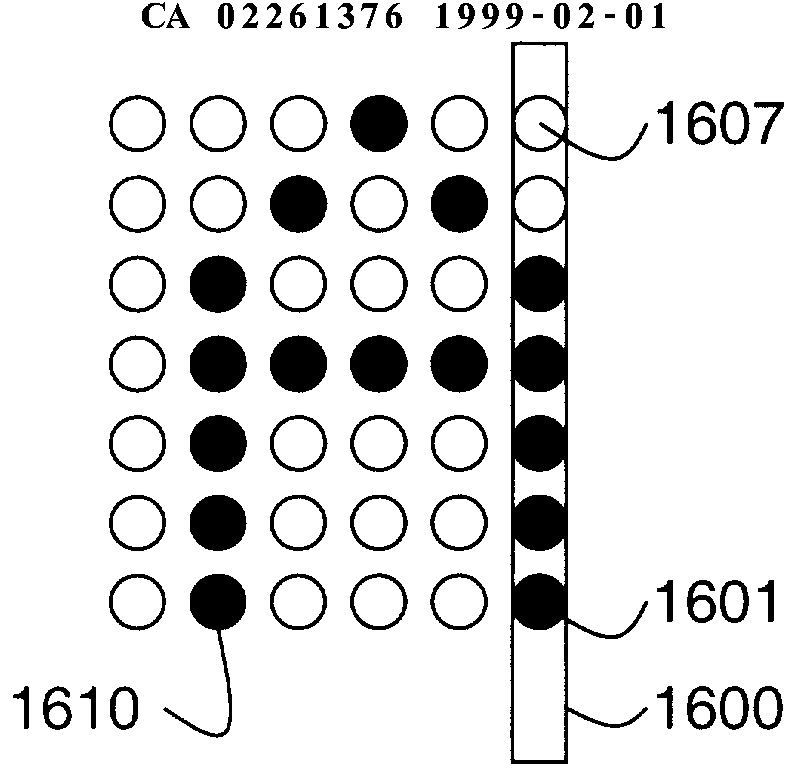
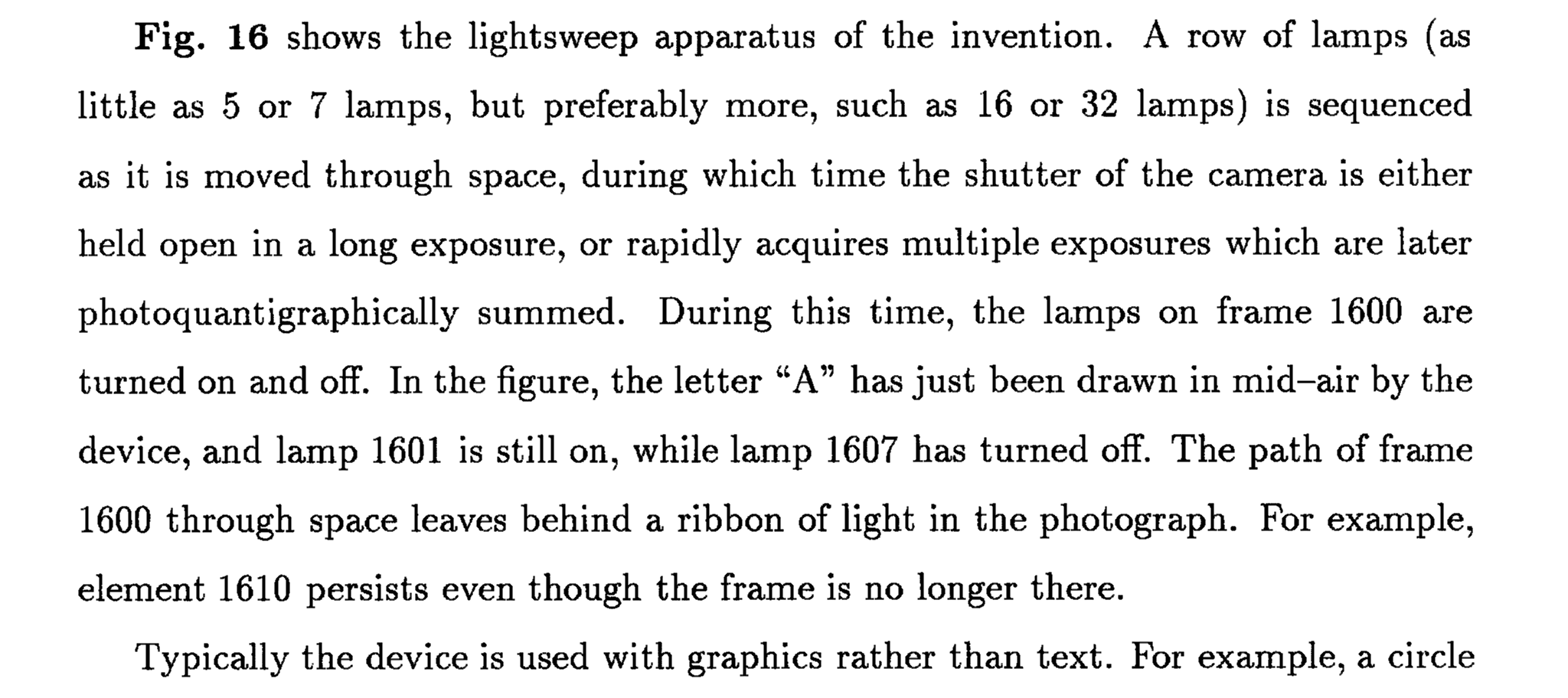 ...
...
Contributions by S. Mann:
Invented highly expressive voice-controlled lightpainting tools in the 1960s.
Invented computational lightpainting in the 1960s and early 1970s, and was the first to do digital lightpainting in the 1980s and early 1990s.
Collaboration with Kodak to develop the world's first digital camera for lightpainting in the early 1990s.
Invented, designed, built, and used SWIM as a highly expressive scientific and artistic lightpainting brush with multiambic user-interface controls in the 1970s.
Worked as lightpainting artist in the 1970s and 1980s using highly expressive computational lightpainting tools as a new art form, including exhibits in numerous galleries, as well as commercial computational lightpainting work as a new art form.
Invented world's first headup display and wearable computer for lightpainting in the 1970s.
Invented live composite lightpainting preview using head-up display to wirelessly view lightpaintings while doing them in the 1980s.
Invented the mathematical framework for combining multiple pictures of the same scene or object, making live composite possible. CEMENT = Computer Enhanced Multiple Exposure Numerical Technique, early 1990s, HDR lightpainting panoramas with live composite.
In 1998 introduced world's first computational lightpainting course. This was also the world's first course on and using digital lightpainting (lightpainting with digital cameras by a community of "photoborgs" who all see a live-composite preview of the lightpainting in their head-up-displays).
Examples of teachings, e.g. S. Mann taught students how to build SWIM
and how to do lightpainting art using SWIM... Here's
an example from November 21, 2001:
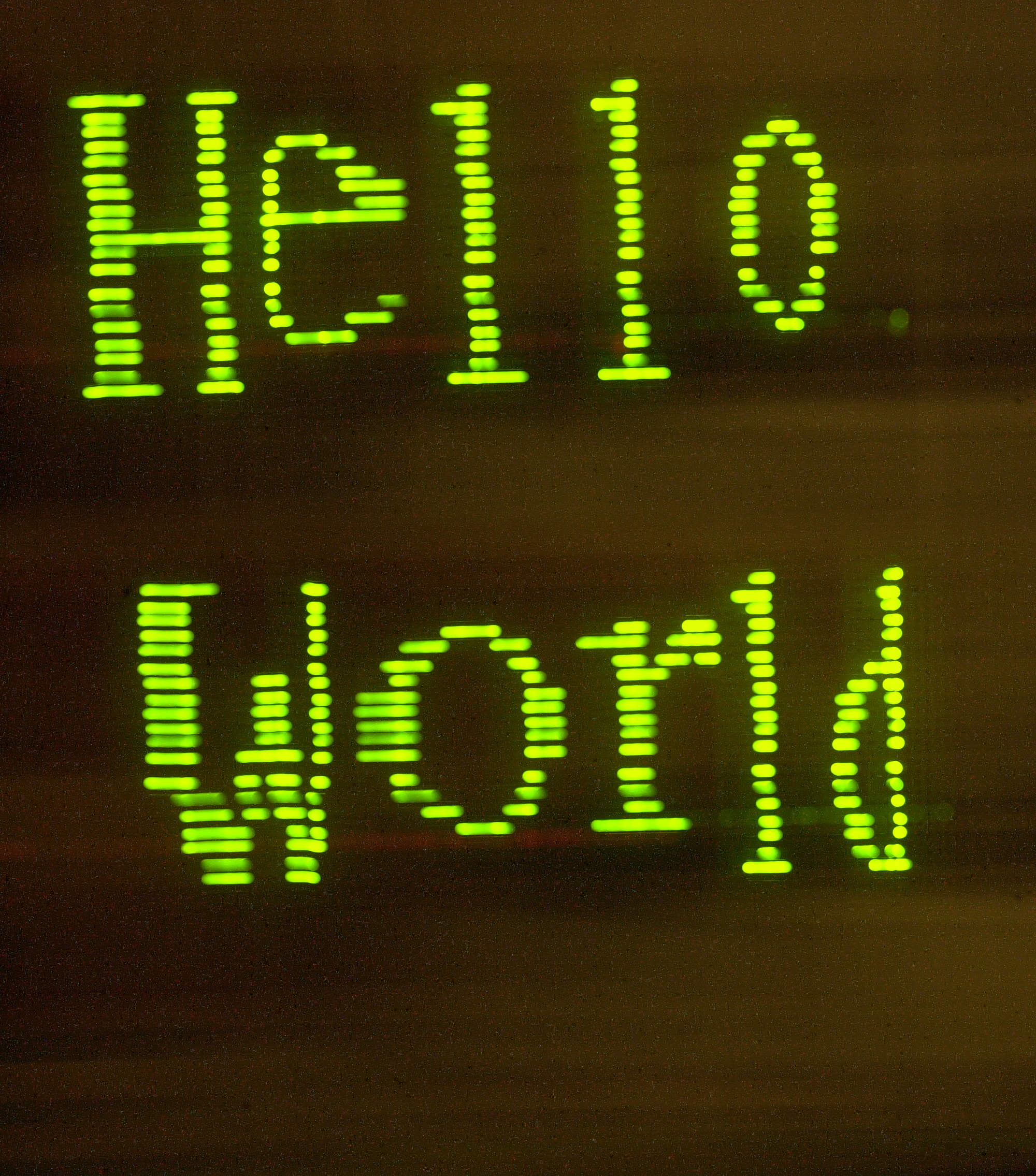
See also, bdf2btf (Bitmap Teaching Font) by S. Mann,
http://wearcam.org/ece385/lecturefonts/fontexample.htm
http://wearcam.org/ece385/lecturefonts/bdf2btf.htm
Jan 12, 2000:

In 2003 Mann continued to teach students how to make lightpainting tools and how to use them to make art, e.g. SWIM Tinquiry/Praxistemology Lab:

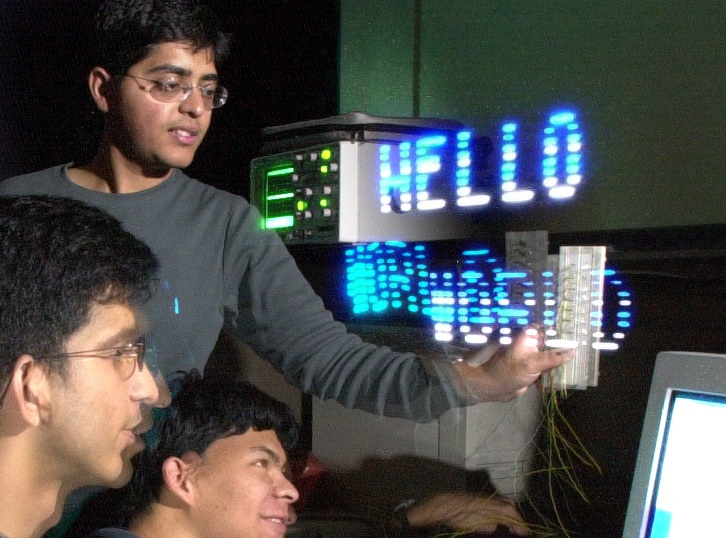
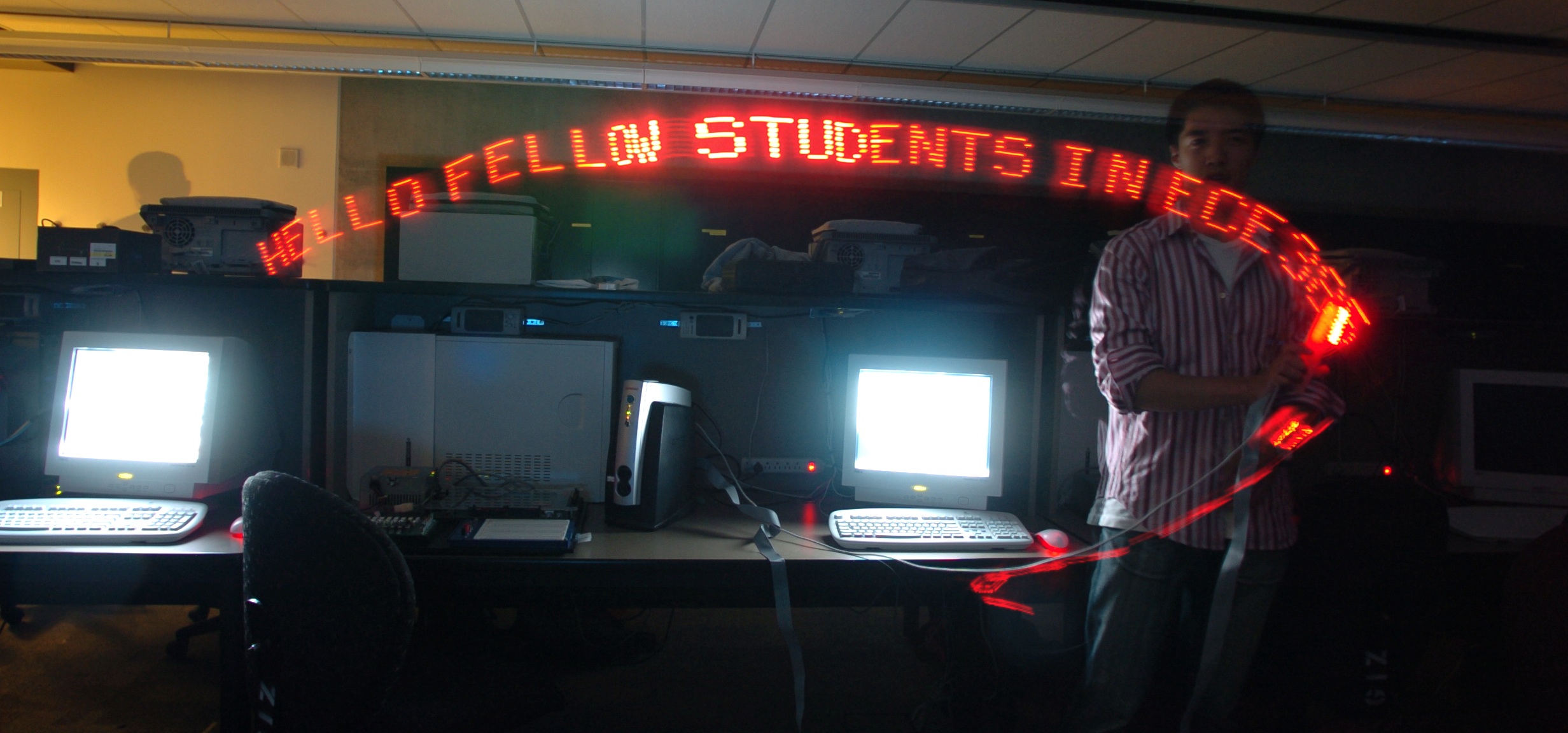
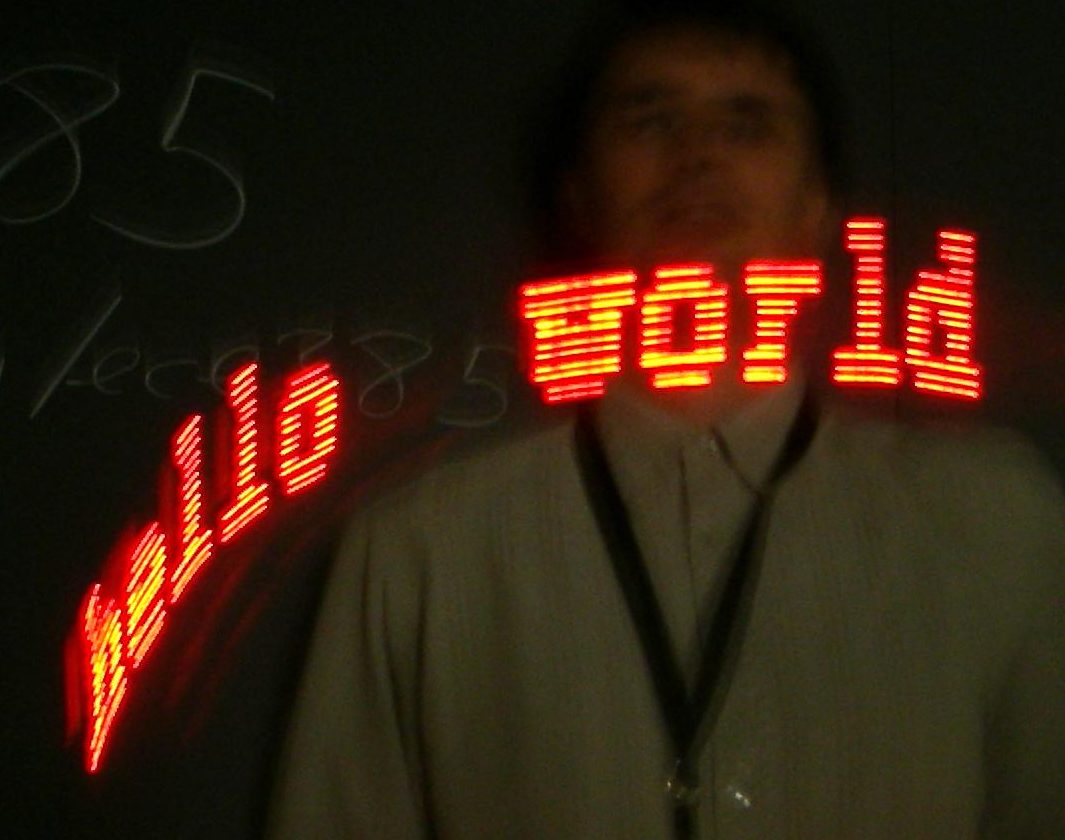
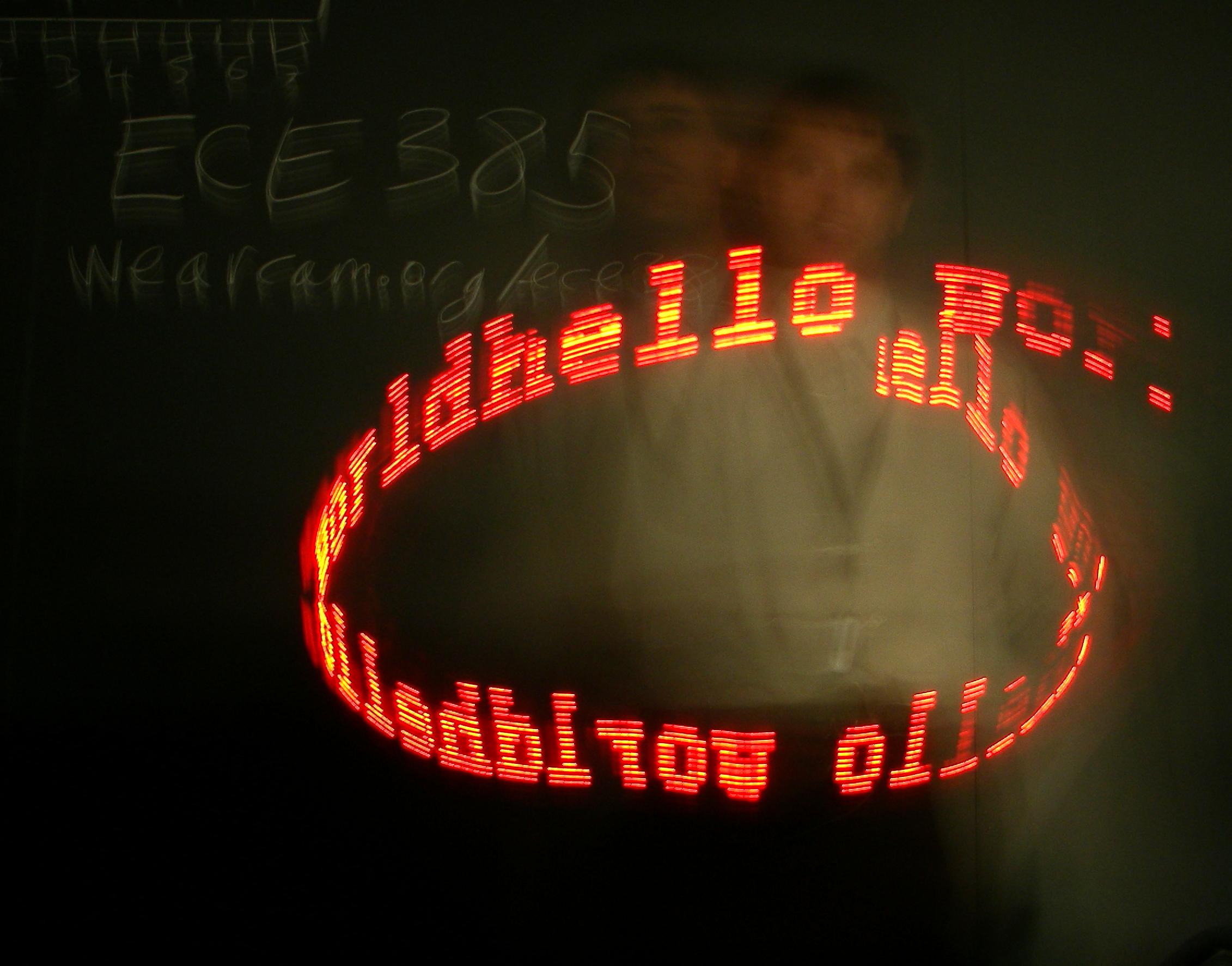
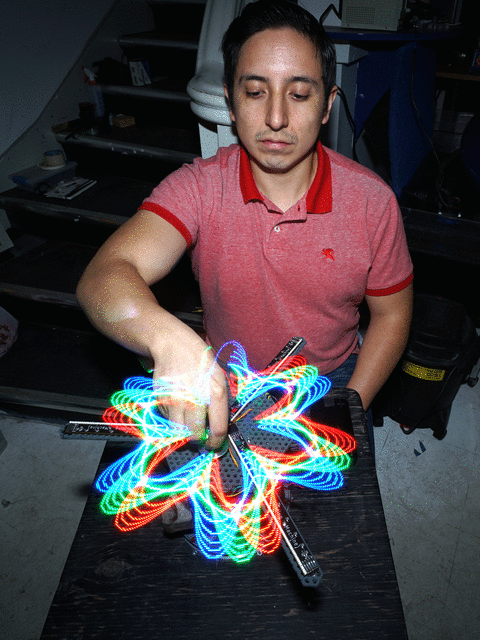
[2] Wavelets and Chirplets: Time-Frequency Perspectives With Applications, Steve Mann, 1992, https://doi.org/10.1142/9789814355841_0006 in "Advances in Machine Vision, Strategies and Applications", editors Archibald and Petriu, World Scientific, Singapore . New Jersey . London . Hong Kong, World Scientific Series in Computer Science - Vol. 32, ISBN 981-02-0976-2, Vol. 32.
This work describes the Sequential Wave Imprinting Machine (S. W. I. M.), an array of digitally addressed lights. As the array is waved back-and-forth its position is tracked by a miniature built-in radar set that controls the rate of readout of a "SWIM buffer" to imprint text, images, pictures, graphics, and graphs upon human vision or photographic or videographic media.
[3] Intelligent Image Processing, Steve Mann, 2001, John Wiley and Sons textbook, Wiley Interscience Series.
Additional bibliographic reference citations:
Phenomenological Augmented Reality with the Sequential Wave Imprinting Machine (SWIM), Steve Mann, 2018 IEEE Games, Entertainment, Media Conference (GEM)
Sequential Wave Imprinting Machine (SWIM) Implementation using SDR (Software-Defined Radio) Steve Mann; Phillip V. Do; Zhao Lu; Jacky K.K. Lau, Seventh IEEE International Conference on Software Defined Systems (SDS), 2020.
Powertrain photography and visualization using SWIM (Sequential Wave Imprinting Machine) for veyance safety, Steve Mann, Jaden Bhimani, Calum Leaver-Preyra, Kyle Simons, Jimi Tjong, 2022 IEEE International Conference on Vehicular Electronics and Safety (ICVES)
Moveillance: Visualizing Electric Machines, Steve Mann;Danson Evan Garcia;Phillip V. Do;Derek Lam;Pete Scourboutakos 2020 22nd Symposium on Virtual and Augmented Reality (SVR)
WaterHCI Part 1: Open Water Monitoring with Realtime Augmented Reality, Steve Mann; Faraz Sadrzadeh-Afsharazar; Samir Khaki; Zhao Lu; Christina Mann; Jaden Bhimani, 2022 IEEE International Conference on Signal Processing, Informatics, Communication and Energy Systems (SPICES), 2022
WaterHCI Part 2: Open water sensing, meta-sensing, and observing with drones and augmented reality, Steve Mann; Zhao Lu; Faraz Sadrzadeh-Afsharazar; Christina Mann; Samir Khaki; Jaden Bhimani, IEEE International Conference on Signal Processing, Informatics, Communication and Energy Systems (SPICES), 2022.
Drone-based sensing and exploration of overhead electric power lines, Steve Mann; Samir Khaki; Jaden Bhimani; Gaël Vergès; Faraz Sadrzadeh-Afsharazar, IEEE 4th International Conference on Power and Energy Applications (ICPEA), 2021.
A Novel Approach to EEG Neurofeedback via Reinforcement Learning, Aman Bhargava; Kyle O’Shaughnessy; Steve Mann, IEEE SENSORS, 2020.